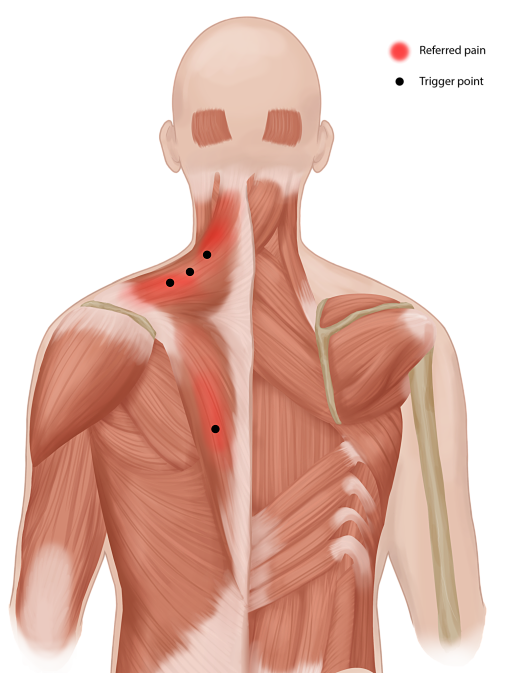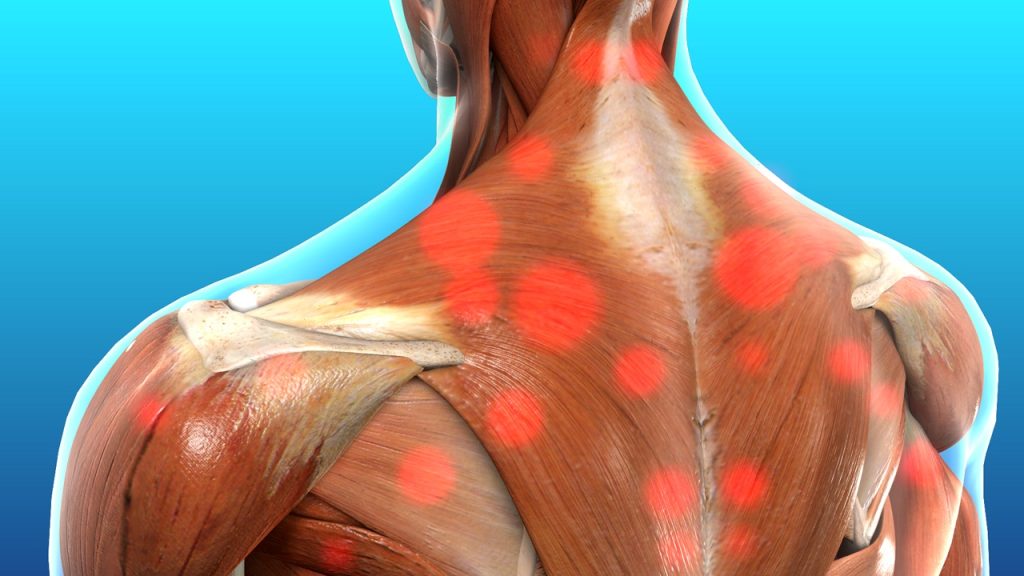Chronic Myofascial Pain (CMP) is a long-lasting condition characterized by deep, aching muscle pain that originates from sensitive areas in the muscles called trigger points. These trigger points are tight knots that can be felt under the skin and may cause pain both at the site and in other areas of the body, a phenomenon known as referred pain. The condition often results from muscle overuse, poor posture, stress, or physical trauma, and can lead to stiffness, muscle weakness, and reduced range of motion. People with CMP may find that their symptoms worsen with physical activity, stress, or prolonged inactivity. Treatment typically involves a combination of physical therapy, massage, trigger point release techniques, dry needling, and pain-relieving medications. In addition, stress management, proper posture, and regular movement are important in managing the condition. With the right approach, many individuals with chronic myofascial pain can reduce their symptoms and improve their quality of life.

Key Features:
- Pain is deep, aching, and localized
- Trigger points can be felt as small lumps in the muscle
- Referred pain may occur in areas distant from the actual trigger point
- May be accompanied by muscle stiffness, weakness, or limited range of motion
- Often worsens with stress, fatigue, or overuse
Causes of Chronic Myofascial Pain (CMP) :
Chronic Myofascial Pain is often caused by repeated strain or injury to a muscle group, which can lead to the development of tight, sensitive areas known as trigger points. These points form when muscle fibers become overly contracted and fail to relax, often due to muscle overuse, poor posture, or repetitive motions. Physical trauma, such as whiplash or a sports injury, can also lead to CMP. In some cases, prolonged immobility—like sitting for long periods without proper support—can contribute to muscle tension and trigger point formation. Psychological stress and anxiety are also known to play a role by increasing muscle tension throughout the body. Other contributing factors may include nutritional deficiencies (such as lack of vitamin D or magnesium), sleep disturbances, and underlying health conditions like fibromyalgia. In many cases, CMP develops gradually and can be difficult to trace to a single cause, often resulting from a combination of physical, emotional, and environmental factors.
- Muscle overuse or repetitive motion
- Poor posture
- Injury or trauma
- Stress and tension
- Lack of physical activity or prolonged immobility

Solutions for Chronic Myofascial Pain :
Managing Chronic Myofascial Pain involves a combination of physical, medical, and lifestyle-based approaches aimed at relieving muscle tension, reducing trigger point activity, and improving overall function. One of the most effective treatments is physical therapy, which includes stretching, strengthening exercises, and posture correction to reduce muscle stress. Trigger point therapy, such as massage, myofascial release, or dry needling, can help deactivate painful knots and improve blood flow to the affected area. Medications like NSAIDs (non-steroidal anti-inflammatory drugs), muscle relaxants, or certain antidepressants may be prescribed to manage pain and inflammation. Techniques like acupuncture, heat therapy, and ultrasound therapy can also provide relief. Additionally, stress management through practices like yoga, meditation, deep breathing, and adequate sleep is essential, as emotional stress often worsens symptoms. Identifying and avoiding repetitive strain or poor posture is key, along with ensuring proper ergonomics in daily activities. While there is no one-size-fits-all cure, a personalized, consistent approach can significantly reduce pain and improve quality of life for individuals with chronic myofascial pain.
- Physical therapy to stretch and strengthen muscles
- Trigger point therapy or massage
- Dry needling or acupuncture
- Pain relief medications (NSAIDs, muscle relaxants)
- Stress management techniques (yoga, meditation)
- Postural correction and ergonomic adjustments
